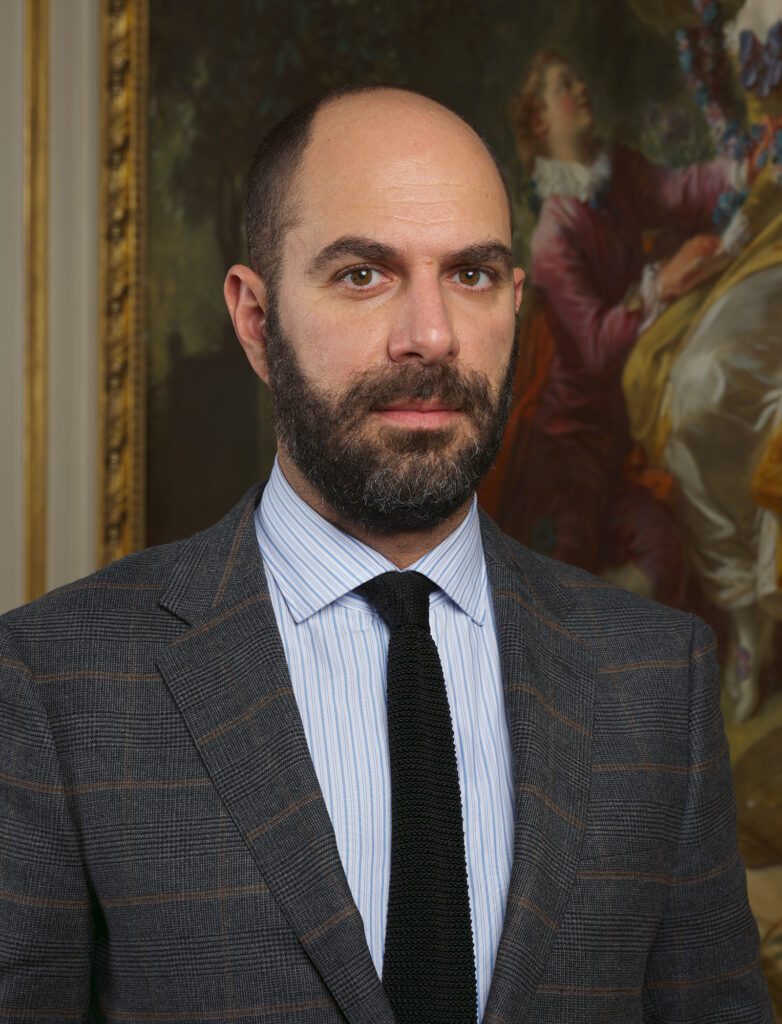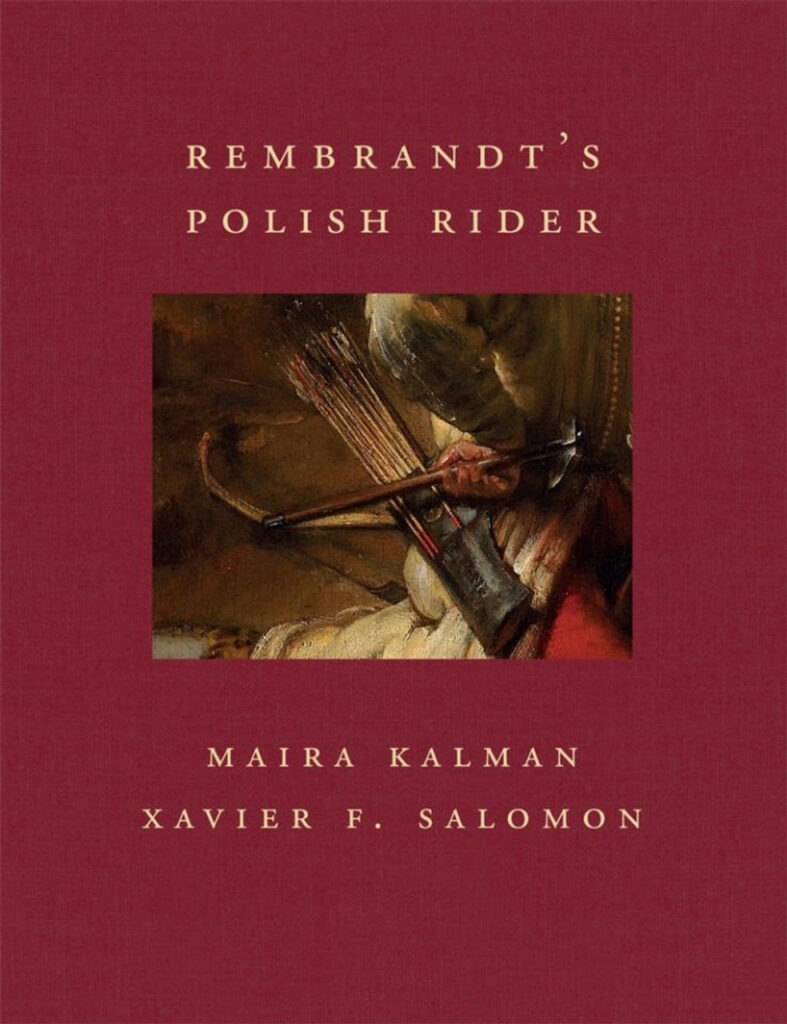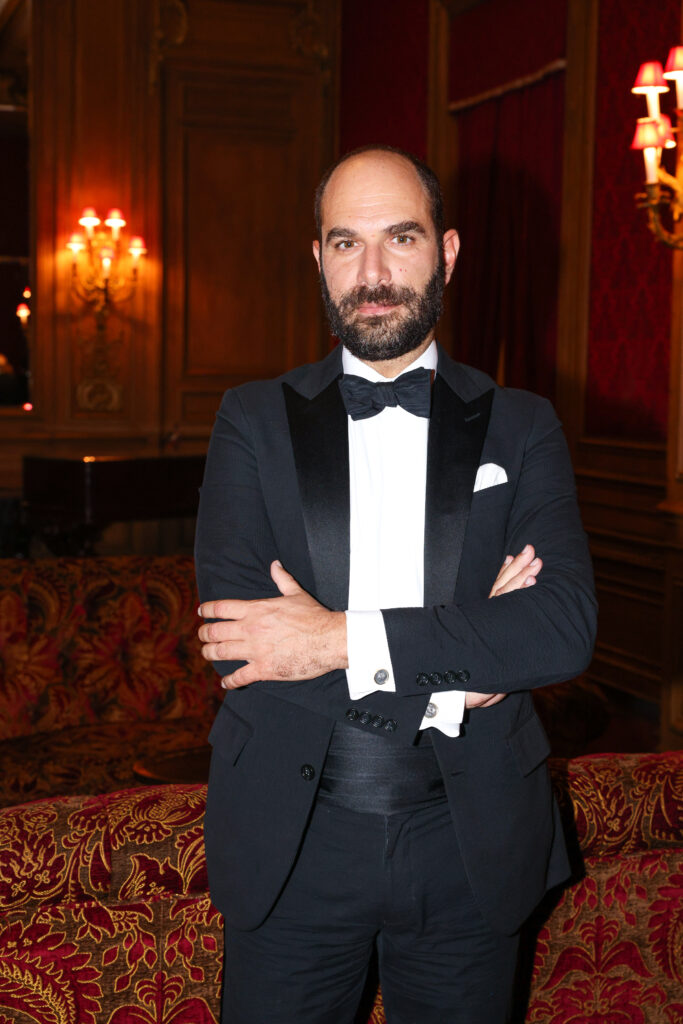“While I researched the Diptych on Rembrandt’s Polish Rider, I got to meet my husband. That will always have a very special place in my heart.”

ALEXANDER HANKIN dines at the Century Association with XAVIER SALOMON who is stepping away as the Frick Museum’s Deputy Director to accept the role as Director of the Calouste Gulbenkian Museum in Lisbon, Portugal.
Why the Century Association?
I have been a member for the past few years. This is my refuge in New York. I find restaurants too noisy. I like to be able to have a conversation. The Century Association is where many of the great New Yorkers in the arts used to meet since the mid-nineteenth century. It is a place with a lot of character.
You’ve produced so many great shows at the Frick.
I have worked at the Frick for more than a decade. An exhibition that stood out for me was Luigi Valdier. Splendor in Eighteenth-Century Rome in 2018/19. It was a challenging show to put together. It was the first exhibition on the artist in the United States. I am also proud of the Living Histories project in 2021, the first time that contemporary queer art was shown at the museum. It was a poignant dialogue between four extremely talented artists – Jenna Gribbon, Doron Langberg, Salman Toor and Toyin Ojih Odutola – and works by Holbein, Rembrandt and Vermeer. The most important work of art I acquired for the Frick has been François Gérard’s portrait of Prince Camillo Borghese.
Any masterpieces that got away?
Yes, of course. There is one work that I very much wanted to buy recently: the Allegorical Tomb of King William III, a large collaboration between four painters – Antonio Balestra, Giovanni Battista Cimaroli and Domenico and Giuseppe Valeriani. It is an extremely important and beautiful painting. The Frick did not buy it, but it was acquired by great collectors in Lisbon, the city where I am moving to.

You have written a few diptych books for the Frick.
I loved writing all the Diptychs. It was a particular pleasure to work with Nicolas Party on the volume on Rosalba Carriera. Collaborating with such a talented artist is always a treat. And while I researched the Diptych on Rembrandt’s Polish Rider, I got to meet my husband. That will always have a very special place in my heart.
The current show Holy Sepulcher: Treasures from the Terra Sancta Museum is so major.
Almost fifty unbelievable works of art, mostly goldsmith work and textiles, on view for the very first time in America. They come from the Church of the Holy Sepulcher in Jerusalem and were gifts of Catholic monarchs and emperors to what is considered the most important and holy site in Christianity. These works of art are incredible survivals – nothing like them exists in Europe any longer. So much of the metalwork from the seventeenth and eighteenth century has been melted down for various reasons. I am very proud to be able to show these magnificent objects to a New York audience. It is a perfect way to leave the Frick and the city.
What spots will you miss in NYC?
Julius’s Bar, the High Line, the Cloisters and Fort Tryon Park, McNally Jackson’s Bookstore, the Metropolitan Opera. Summers in Fire Island.
“I like all periods in history. I am not a great fan of the present.”

Do you have a favorite period of art?
I like all periods in history. I am not a great fan of the present.
Favorite artists?
The list is very long. Paolo Veronese has always been a great favorite and the painter I have worked on and keep working on, the most. But in no particular order: Velázquez, Chardin, Augustus Saint-Gaudens, the ancient Etruscan artists who frescoed the tombs in Tarquinia, Degas, Benvenuto Cellini, Domenico Gnoli, Bernini, Sargent, the artists who designed Indian Mughal carpets, Louis Fratino.
You have fantastic art adventures all over the world.
Recently I have been spending some time in Greece. I loved the Southern part of the Peloponnese, Mani and the peninsula of Mount Athos. Mount Athos was like stepping back in time and living centuries ago, aways from the modern world. I also love Warsaw and its art scene now – wonderful contemporary galleries like Lisowski and Gunia Nowik – and the food. I am hugely looking forward to exploring my new home country, Portugal.
Tell me about the Calouste Gulbenkian Museum in Lisbon.
The museum is based on the collection of Calouste Gulbenkian (1869-1955), an extremely wealthy businessman with the most discerning taste. After my years at the Frick, I am hugely excited about this. The museum has a collection that is three times the size of the collection at the Frick and is much more refined and interesting in scope. The Frick epitomizes the typical Gilded Age desire for Americans to emulate the homes of the European aristocracy by bringing together great masterpieces from Europe. Gulbenkian was an Armenian who lived between Istanbul, London, Paris and Lisbon. He was a cosmopolitan man who was interested in all kinds of sophisticated works of art: Egyptian antiquities, Greek coins, Iznik tiles, mosque lamps, Rembrandt and Rubens, Japanese lacquer, French furniture, Indian carpets, silver, medieval manuscripts and Impressionist paintings.
You have a huge book collection.
All my books will be moving to Lisbon. It is challenging to organize the packing of more than 15,000 volumes, but I look forward to being surrounded by them in my new home in Lisbon. My husband Michal and I are very happy to share this new phase of our lives together. As a couple it is often challenging to move to the city where the other one has lived for a long time. Lisbon will be a clean slate for both of us and a city we can explore together and get to know and love.

